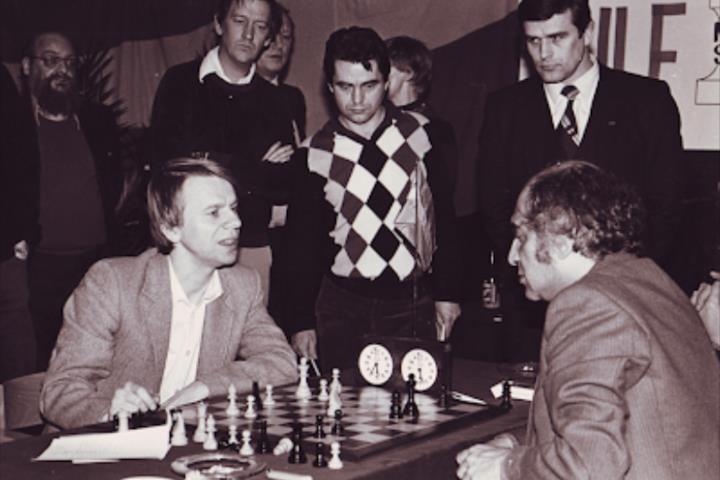Fighting for a reserve spot in the Candidates
Background: Moscow Interzonal 1982
The Moscow Interzonal of 1982 was one of three qualifying tournaments for the 1983–84 Candidates matches, the stage that decided who would challenge Anatoly Karpov for the World Championship. The tournament followed a 14-player single round-robin format and was held in the autumn of 1982.
The 19-year-old Garry Kasparov dominated proceedings, scoring 10 points out of 13 without losing a game. His youthful success, achieved against many of the world’s best players, was seen as a clear sign of his exceptional talent. Aleksandr Beliavsky, then 28 and still a relatively young competitor, took second place with 8½ points, a result built on his fighting approach – he conceded only three draws across the event.
Behind them, two players tied for third place on 8 points: the former World Champion Mikhail Tal, aged 46, and Sweden’s leading grandmaster, 31-year-old Ulf Andersson. Tal had first won the world title more than two decades earlier in 1960–61, yet remained a formidable opponent. Both players in Moscow had lost only once – Tal against Beliavsky in round seven, Andersson against Efim Geller in round eight.
The closing round saw the drama of several players still in contention for the second qualifying ticket. Kasparov had already secured first place with 9/12, while Tal, Andersson, Beliavsky, Geller and Cuban grandmaster Guillermo García each stood at 7½. On the final day, Beliavsky, with the black pieces, managed to beat Florin Gheorghiu and thus guarantee qualification. Geller and García both lost, while Andersson, playing white against Tal, agreed to a 16-move draw, leaving them tied for third place.
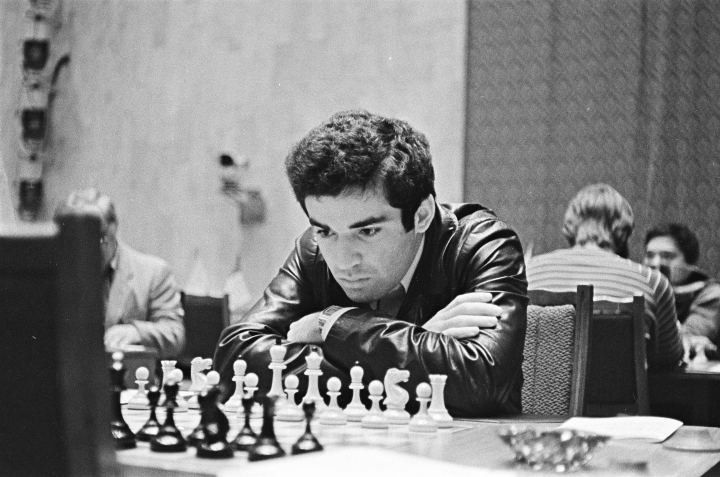
Garry Kasparov, aged 19 | Photo: Boris Dolmatovsky / chesspro.ru
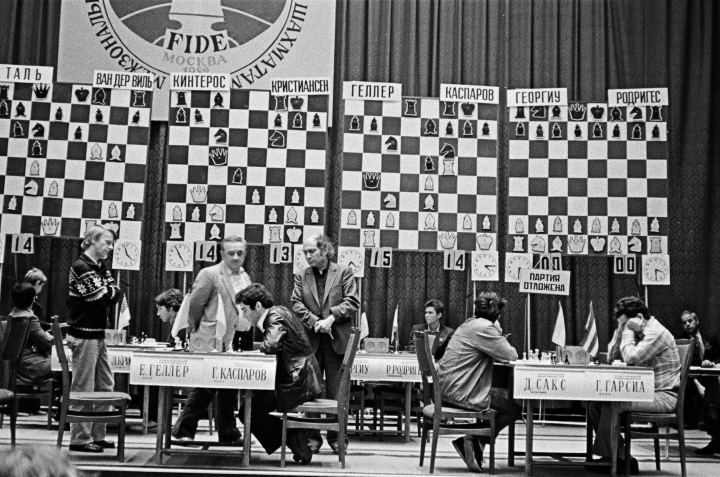
Round four – Andersson and Tal having a look at the Geller v. Kasparov game (Kasparov is pondering his fifteenth move, after 15.Rb1) | Photo: Boris Dolmatovsky / chesspro.ru
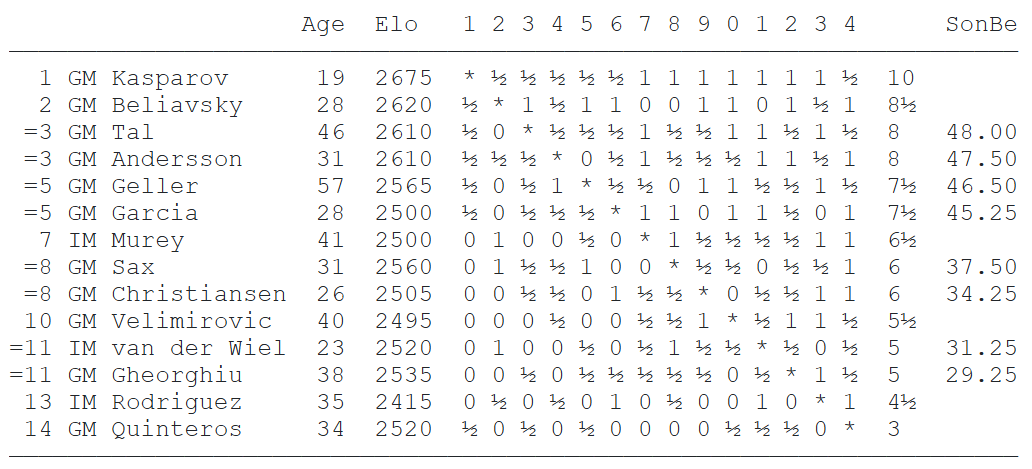
Final standings | Source: chessgames.com (compiled by Tabanus)
All games – Moscow Interzonal 1982
FIDE’s need for a reserve player
The Candidates’ system required eight players for the quarterfinal stage. Two places had already been reserved for Viktor Korchnoi and Robert Hübner, as they had contested the Candidates Final of the previous cycle (1980–81). The remaining six players would come from the three Interzonals held in Las Palmas, Moscow and Toluca.
Tal, Andersson, Kasparov and Beliavsky had all been seeded directly into the Moscow Interzonal by the FIDE congress in Atlanta in 1981, based on their rating and earlier achievements. Tal, as a former World Champion and a Candidate in the previous cycle, was automatically in the pool. When Tal and Andersson ended level in Moscow, the question arose of who should be named reserve for the Candidates matches, in case Kasparov or Beliavsky were unable to participate.
FIDE decided to settle this with a head-to-head match, to be staged in Malmö, Sweden, at the beginning of 1983. The tiebreak system from Moscow gave Tal the advantage, which meant Andersson could only claim the reserve position by winning the match outright.
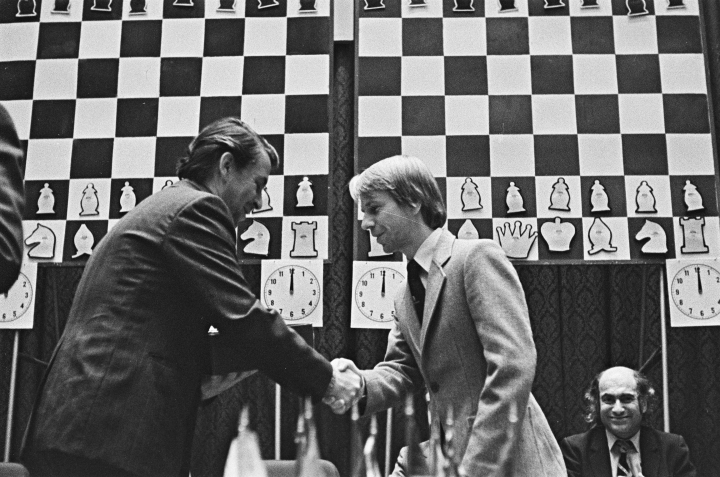
Ulf Andersson receiving his prize, Mikhail Tal smiling right behind | Photo: Boris Dolmatovsky / chesspro.ru
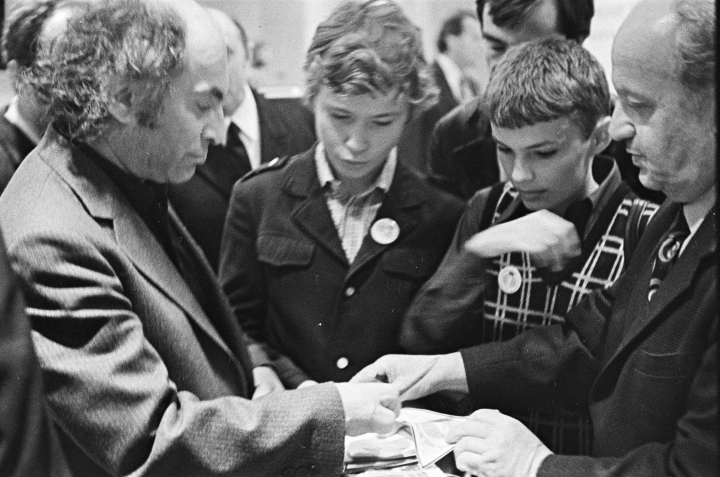
Mikhail Tal, chess superstar | Photo: Boris Dolmatovsky / chesspro.ru
The six-game match in Malmö
The Malmö contest was played over six games. The first encounter set the tone: out of a Nimzo-Indian Defence, the queens came off early, and Tal, perhaps sensing a balanced position, offered a draw.
Commentary by Vladimir Bagirov for Shakhmaty (translated by Douglas Griffin):
Here Tal offered a draw, considering that the opponents had fought sufficiently hard for the start of a match. And in addition, the position does not promise either of them any ‘excitement’. But remarkably, in this game (the opponents, prior to this point, had played 17 times, the score of which was +2, =15 in favour of Tal) for the first time in his life the Swedish grandmaster – a very peaceable person by nature – decided to play on a little.
Andersson declined, pushing for more, but in doing so went beyond the safety of the position. Tal took advantage of this over-ambition and gradually outplayed his opponent
Vladimir Bagirov (after Tal’s 29.c6!):
Andersson was in serious time trouble, although in the given position this does not have any significant. With clear-cut manoeuvres Tal easily conducts his advantage to victory.
The “Magician from Riga” scored a 41-move victory and took the lead.
Games two and three both ended peacefully – one after 27 moves and the other after 20. The fourth game was widely regarded as the critical encounter. Andersson, playing white, steered the game into one of the controlled positional struggles he was famous for, eventually reaching an adjourned endgame where Tal’s position was extremely difficult.
Commentary by Vladimir Bagirov for Shakhmaty (translated by Douglas Griffin):
The sealed move. In this difficult position for Black the game was interrupted, and a two-day-long analysis begun. While this was in progress, the fifth game took place, in which both opponents were thinking more about the fate of the adjourned one.
As Andersson later said, he had most of all feared the move 41…Kf8. However, Tal of course analysed only the position after his sealed move …Nc3–d1. (Translator’s note: Tidskrift för Schack states that Tal had deliberated over his sealed move for a quarter of an hour, and that Bagirov later hinted that 41…Kf8 would have been preferable. But in this source Andersson is quoted as saying that he did not think that it mattered much, and that the play was similar in either case.)
In this insightful video course, Grandmaster David Navara shares practical advice on when to calculate deeply in a position — and just as importantly, when not to.
Free sample video: Introduction
Free sample video: Invisible moves
When play resumed, Andersson, normally so steady in technical situations, failed to maintain his precision under time pressure. First he missed a straightforward win, and later he allowed Tal to escape entirely.
While attention focused on the adjourned game, the fifth encounter was played in subdued fashion and ended in a draw. At that stage, Tal still led the match by one point. In the final game, Andersson struck back with a convincing win, levelling the match. Tal, already assured of keeping the reserve position with a drawn match, may not have been fully motivated for the last encounter.
In the end, Tal’s role as reserve player did not come into play, as both Kasparov and Beliavsky took part in the cycle as scheduled. The Malmö match, therefore, had no practical impact on the course of the World Championship. For Andersson, however, it was followed almost immediately by a positive outcome: he travelled to Wijk aan Zee and won first place at the 1983 Hoogovens tournament.
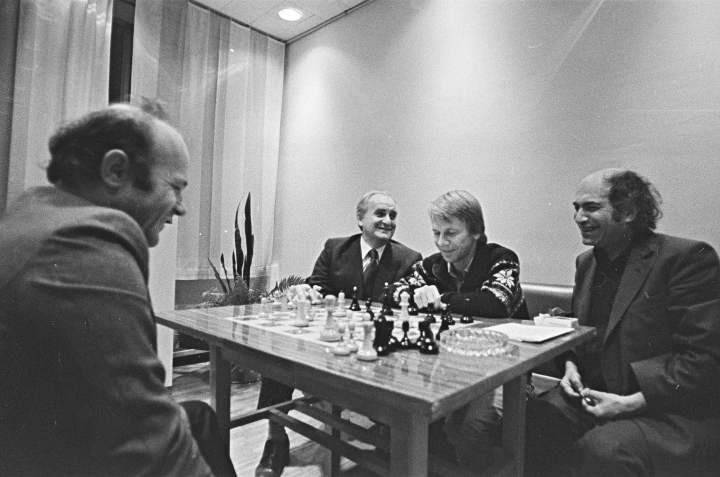
In high spirits, sharing notes at the 1982 Interzonal Tournament in Moscow | Photo: Boris Dolmatovsky / chesspro.ru
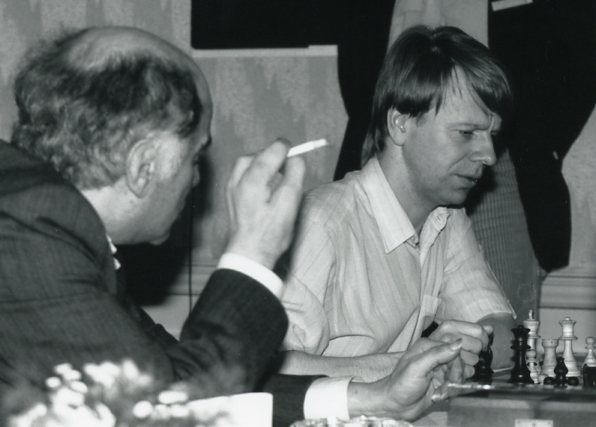
Six years later, at the 1988 Brussels World Cup 1988 – Mikhail Tal and Ulf Andersson analysing | Photo: Christer Olesen (uploaded to Lars Grahn’s X account)
All games – Andersson v. Tal
